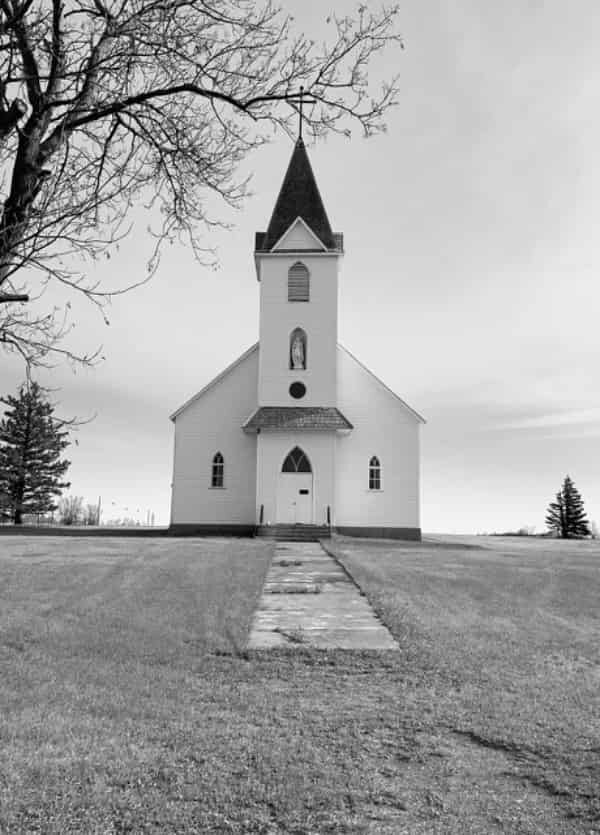1938 ~ Changes in the past 80 years ~ 2018
The following was brought to me by a subscriber. I promised that I would not publish his name, but I thought our readers might enjoy the read. This could pertain to young boys growing up anywhere in the prairies.
I will not use people’s names or names of schools or towns, as this could be one of many farm boys growing up in Saskatchewan.
Started school at age seven (no kindergarten then) to a one-room country school, class of four to ten students with one teacher, grades one to eight. Some of these schools had a teacherage (small house in the same yard for the teacher to stay in). Schoolyards were approximately two acres. If no teacherage, the teacher boarded with one of the pupil’s parents. After receiving their grade eight at fifteen, some worked on the farm at home or worked for neighbours. They got their driver’s license at sixteen for two dollars after taking a road test with the traffic officer.
These schoolhouses were about eight miles apart, so no one had that far to travel to school. Students rode a pony in winter and a bicycle in summer. There were no school buses in those days. These schools were heated with a coal furnace in the basement, with one of the older boys responsible for lighting the furnace each day. In June, the schools would have a field day where they would meet with kids from other schools, competing to win the crest for their school.
As the boys reached seventeen or more, they would buy a truck. In 1955 you could buy a brand new half tom for $1800 (the price of a nice bicycle today). In 1949 you could buy a new Pontiac car for $2400. In 1967 the same car only cost $3050 with automatic transmission and radio. By 1974 a nice Chev Impala cost $4800. In 1982 a Buick LeSabre cost $12,000. In 1990 and Olds Ninety-Eight cost $38,000 with prices going up every year. Today, cars and trucks are in the $46,000 price range depending on the options, up to $70,000. That covers the auto price changes in those years.
Now for the price of machinery. In 1939 you could buy a new Oliver 80 tractor for $900 plus an eight-foot combine for about the same price. The hopper on the combine held 35 bushels of wheat. Combine hoppers today hold about 400 bushels. The grain was hauled eight miles to the elevator with a 1939 half-ton truck ($900 new), full load being 50 bushels. Today grain is hauled anywhere from 10 miles to a hundred miles in a 30 wheel truck, 1800 bushels per load.
As for seeding, back then, it was an eight-foot seeder, increasing over the years to eighty-five feet today. Back then, people only seeded half their land each year, leaving half in summer fallow. The crops seeded back then were mostly wheat and barley, some flax, also oats for the livestock. Seeders started at $500, increasing to $200,000 today with seed tank holding 600 bushels.
Crop sprayers started at 32 feet, pulled behind an open tractor for $500. Today they are up to 130 feet, self-propelled priced at $300,000 plus.
Grain storage wooden bins held approximately 1000 bushels. Today some large steel bins hold 29,000 bushels plus. Many farmers are using grain bags filled with a special machine and a different machine to empty them—each bag holding 3000 bushels or more.
Stepping back to the home. Most people used to live in houses that were about 24x26 feet total; some had an upstairs. There was no phone or power back then. Telephones came in some rural areas in about 1950. Power came in some rural areas in 1955. Water and sewer in towns came in the late 1950s.
Growing up in rural Saskatchewan, most small towns had a movie theatre (Friday night and Saturday night shows). You could go to a show for 15 cents. School-kid prices were – 7 cents for pop and 3 cents left for candy.
These small towns had churches, at least three grocery stores, hardware, lumber yard, hotel, restaurant; some had their own laundry stores, some with hospitals and doctors, and a dentist. These towns had larger schools with grades one to twelve. The hospitals usually had a drug store to go with them. Some of the small towns had two or three auto dealers plus two or three machine dealers. With all this service, people didn’t have to travel to a larger town as they do today. Most small towns had their own bank. Some towns had two or three grain elevators, different elevator companies, Pool, UGG, Searle, Federal.
The local farmers brought cream and eggs to town to be shipped away, giving them money to buy their groceries. The farms ranged from one-quarter section to one section (4 quarters), one section being a large farm in those days.
Through the years, farms kept getting bigger, with some farming 10,000 plus acres owned and rented. In those days when farmers built a house or barn, they all banded together and built it.
Those are some of the changes we have seen over the years, not all good, as farms are now few and far apart. This has also closed a lot of small towns.
I guess time goes on, like it or not.
I’m just one of the many who have seen these changes.
Photos by Kate Winquist
The St. John’s School is a one-room schoolhouse built in 1924. It is located approximately 12 kms south of the Town of Leader.
COUNTRY CHURCH: St. Anthony’s Church (Grosswerder) in west central Sask.


